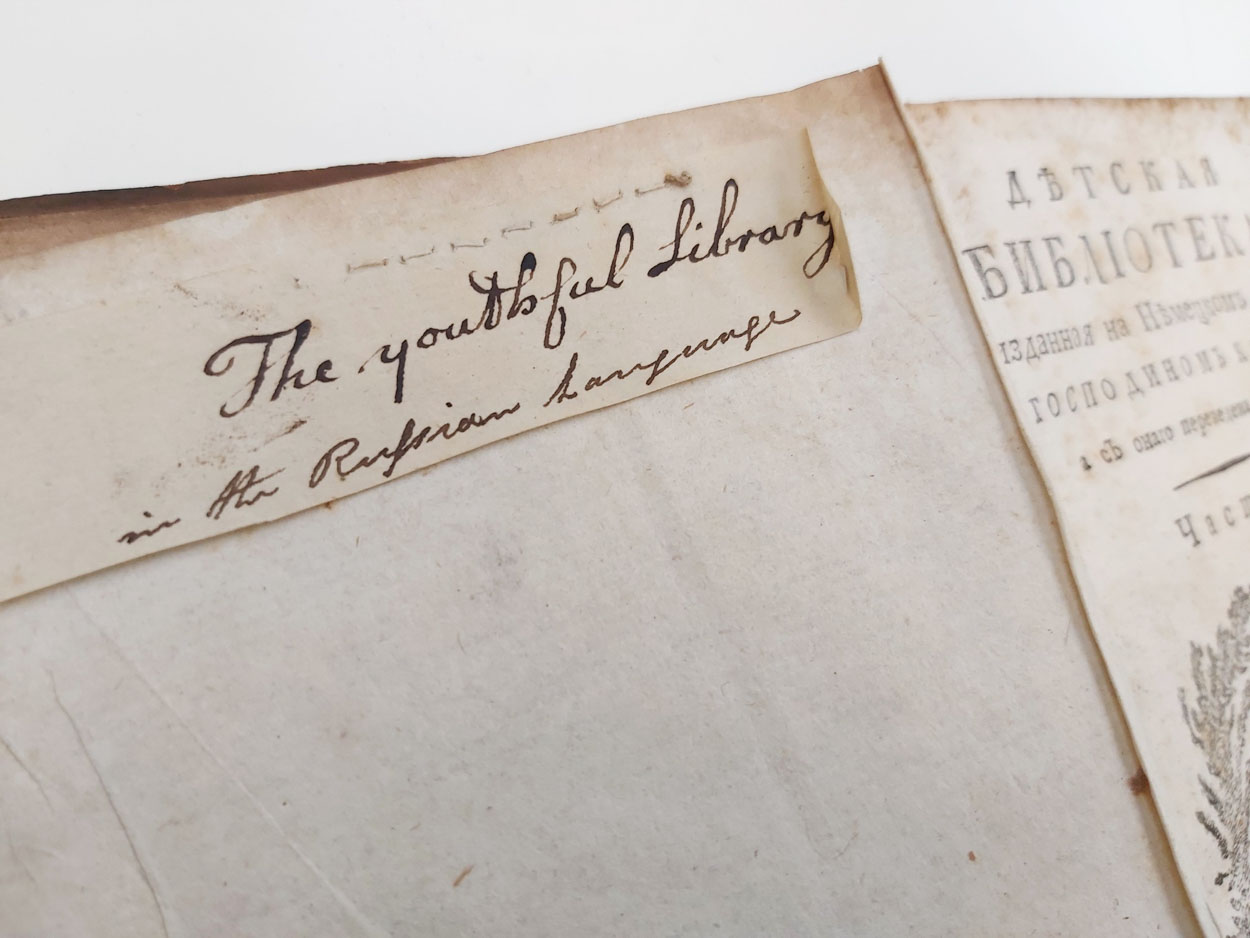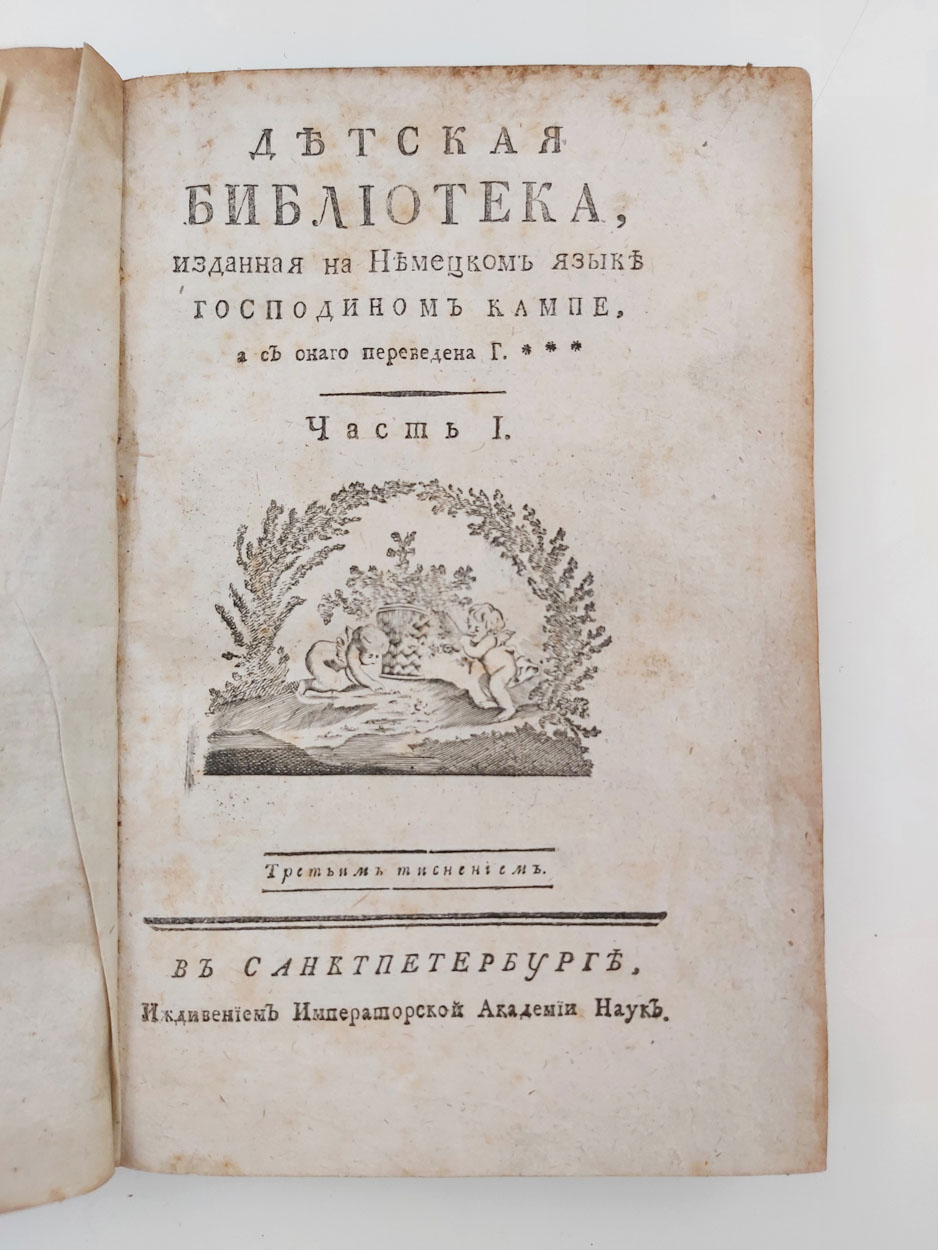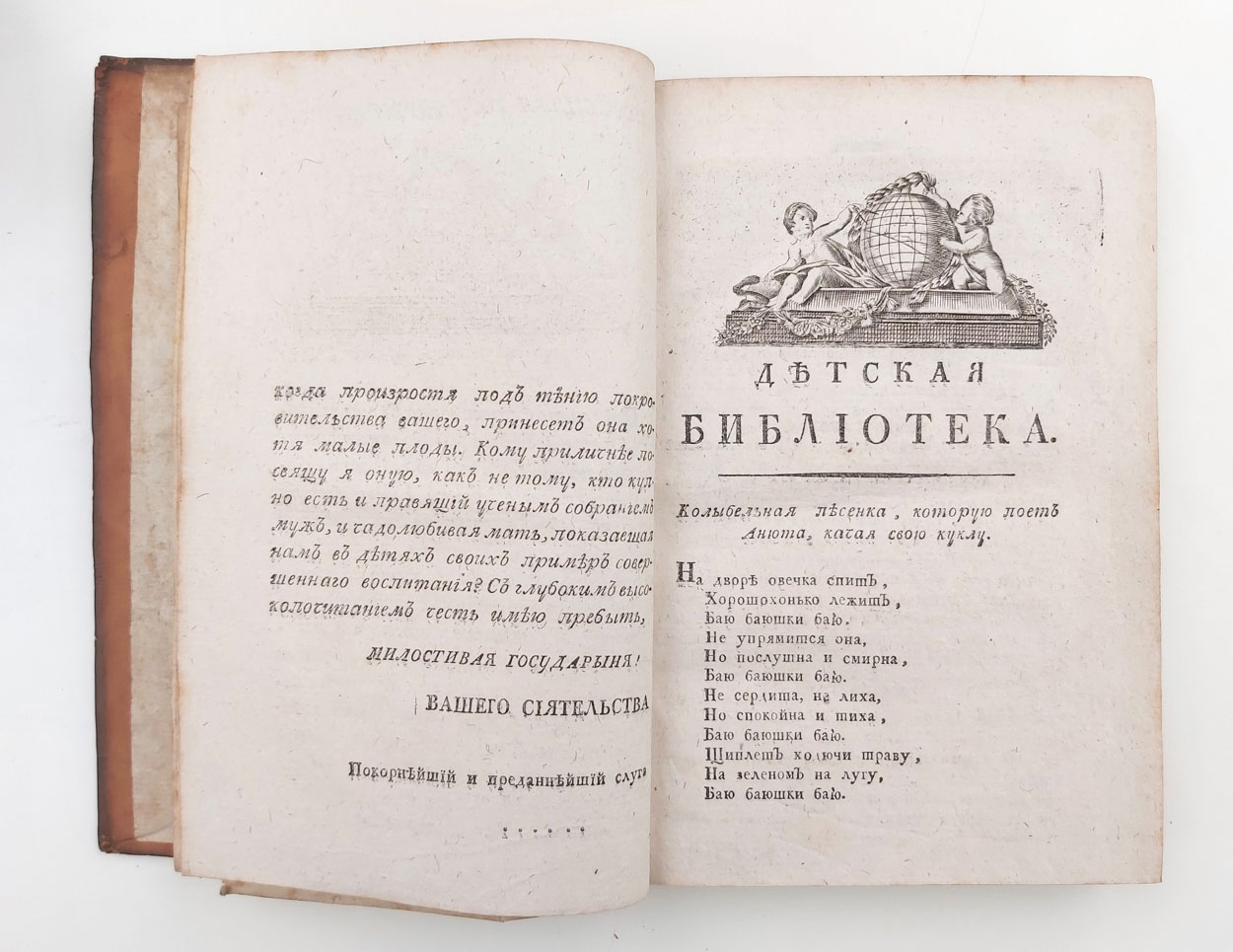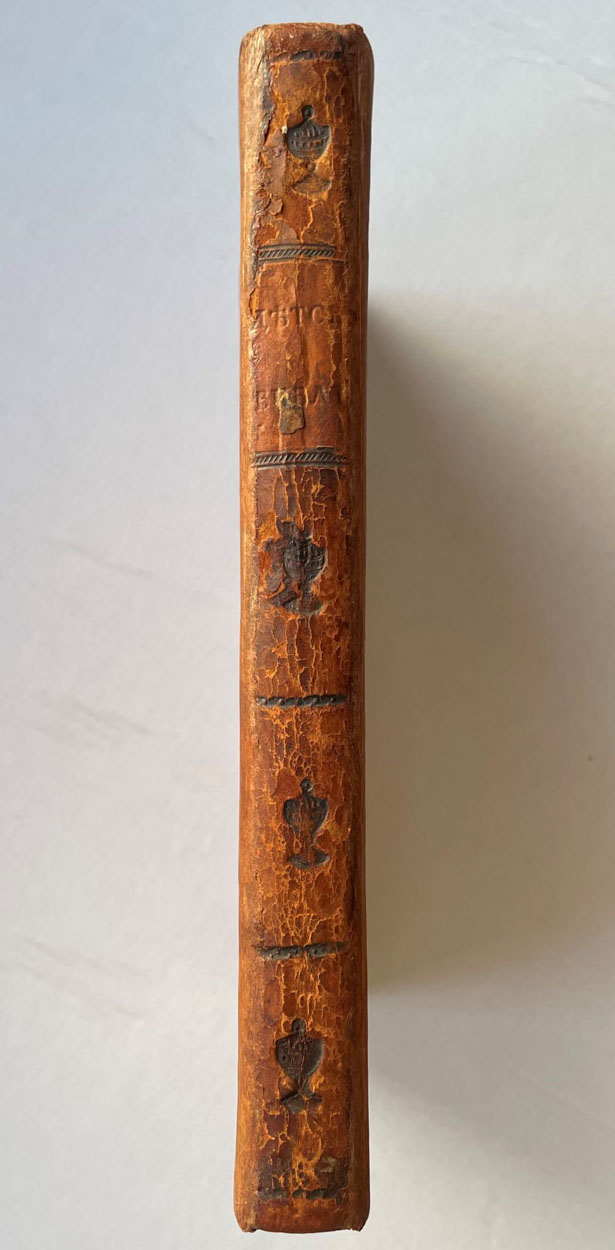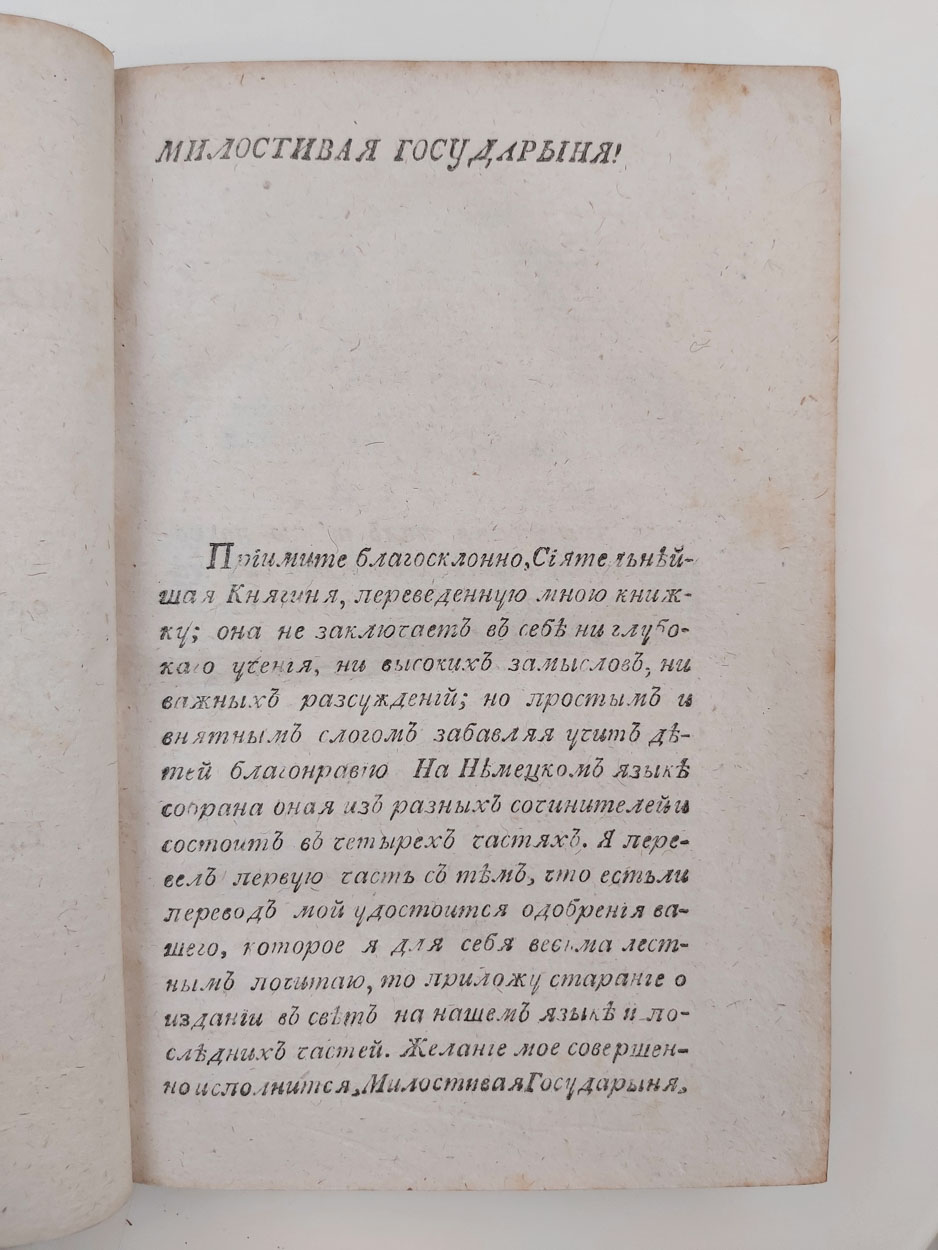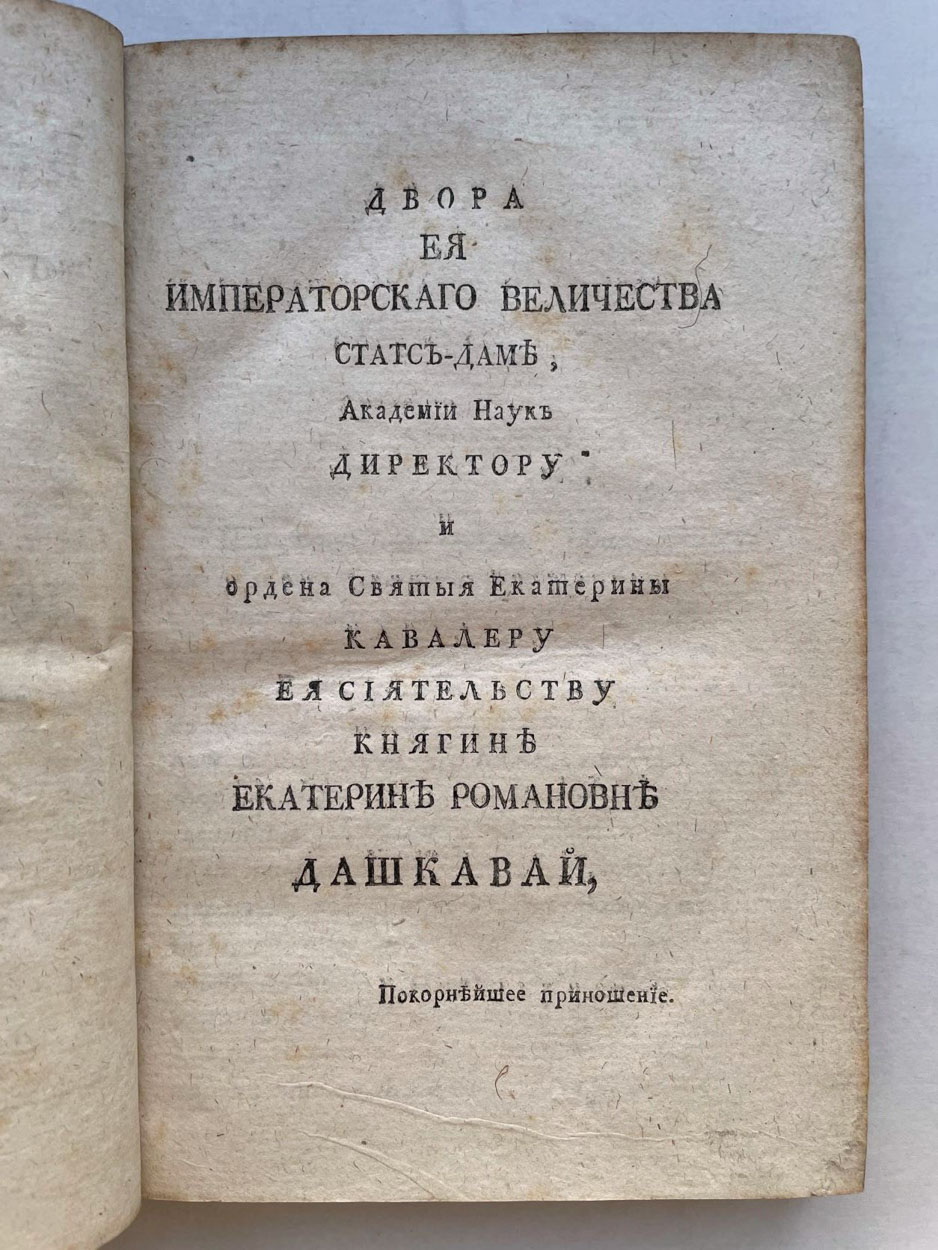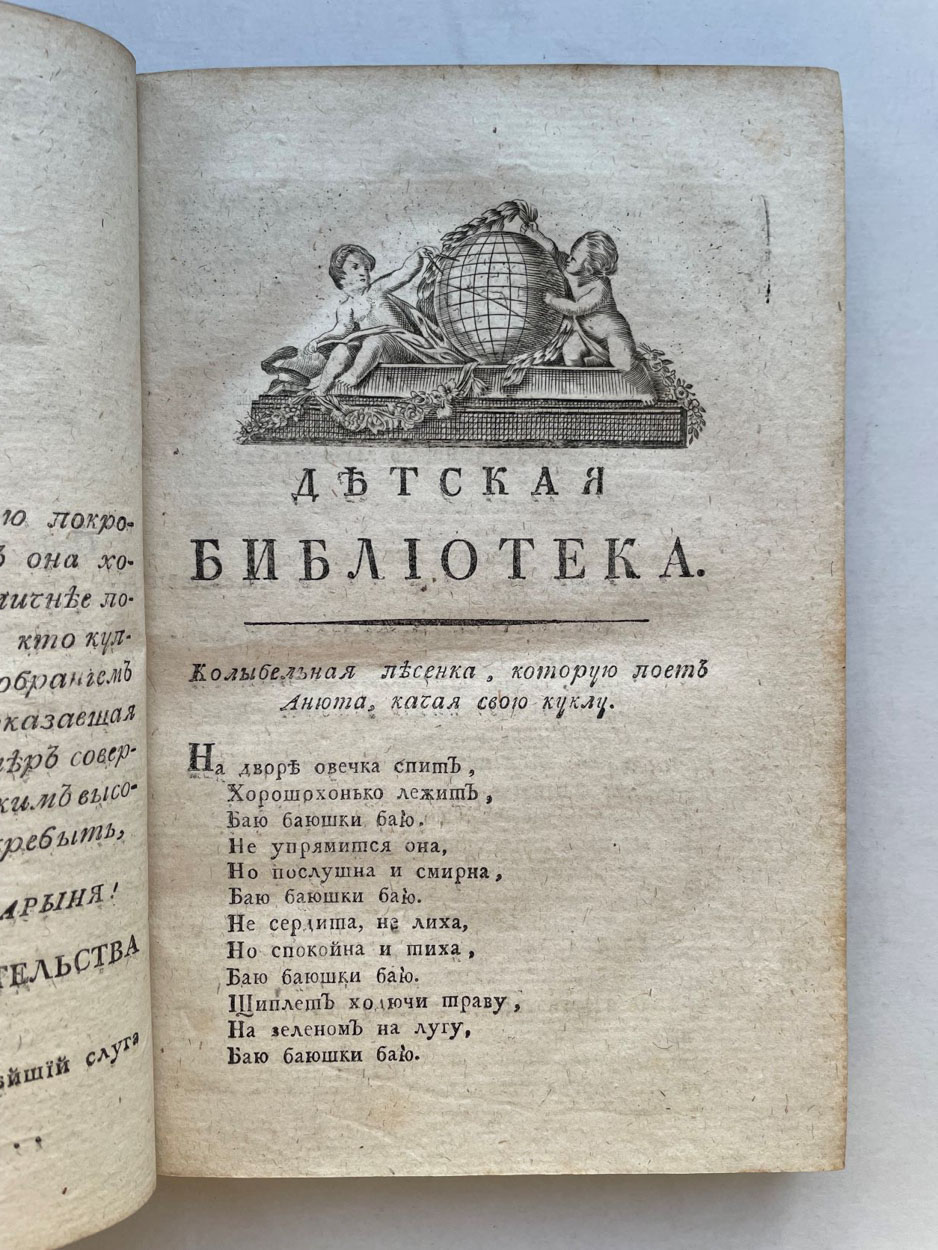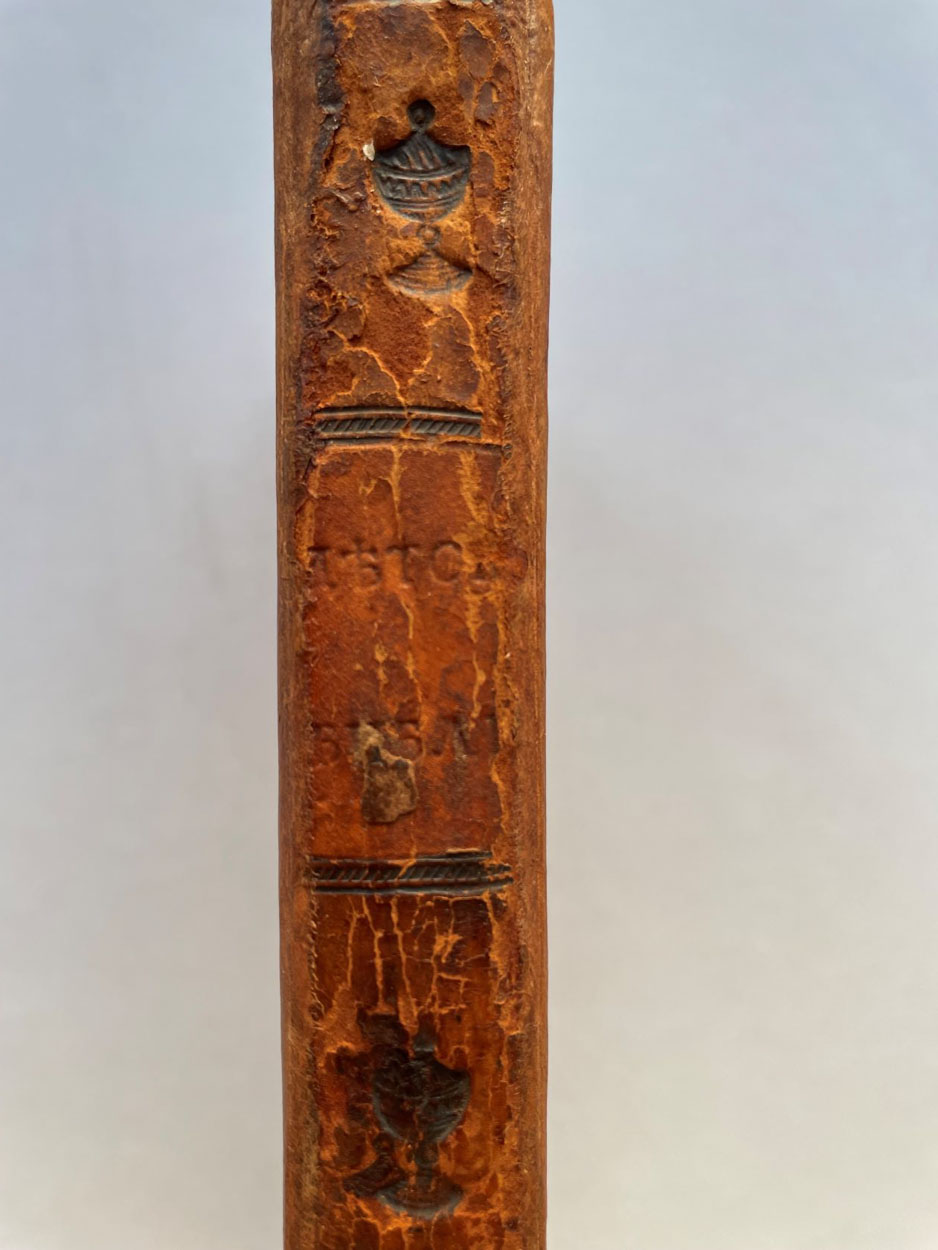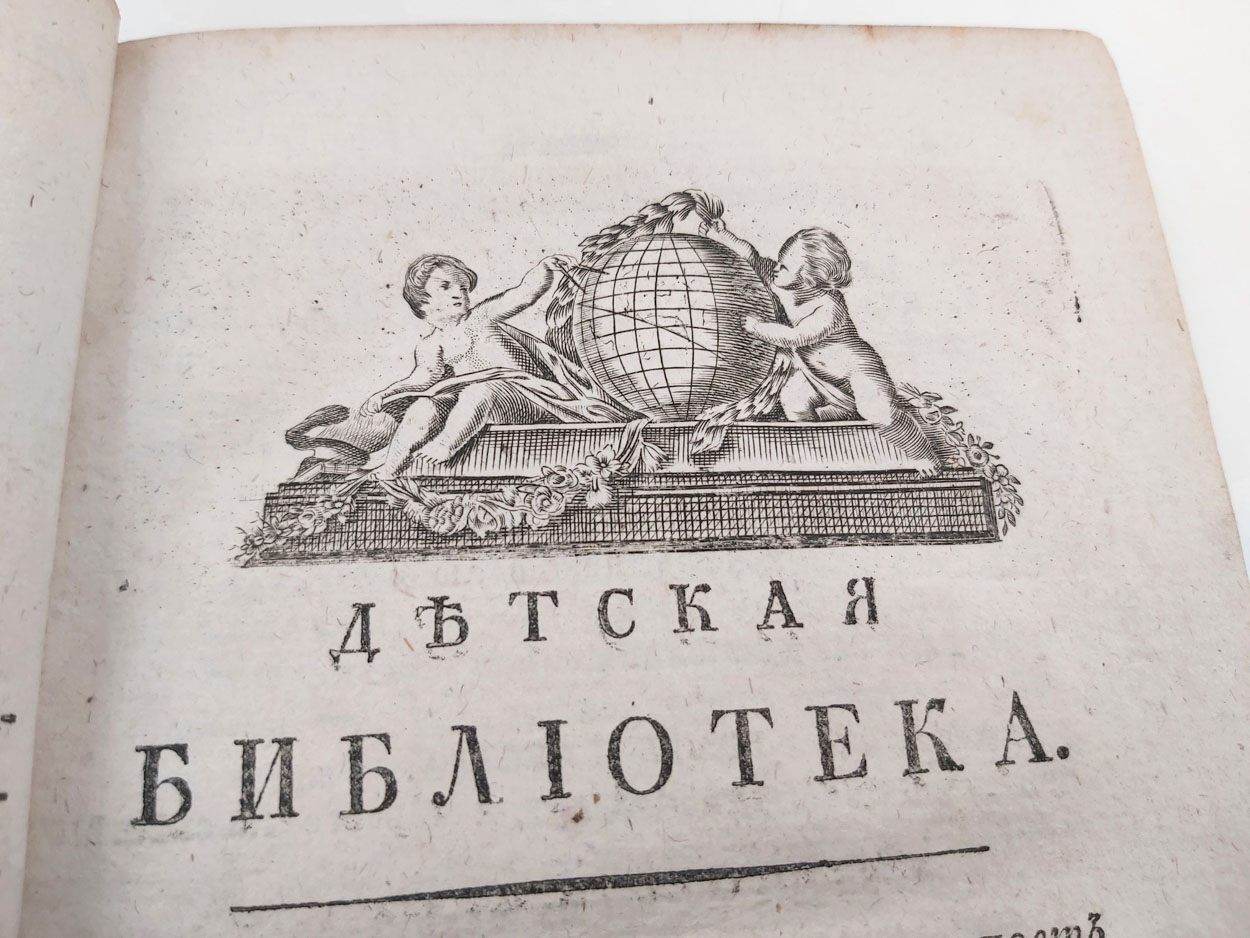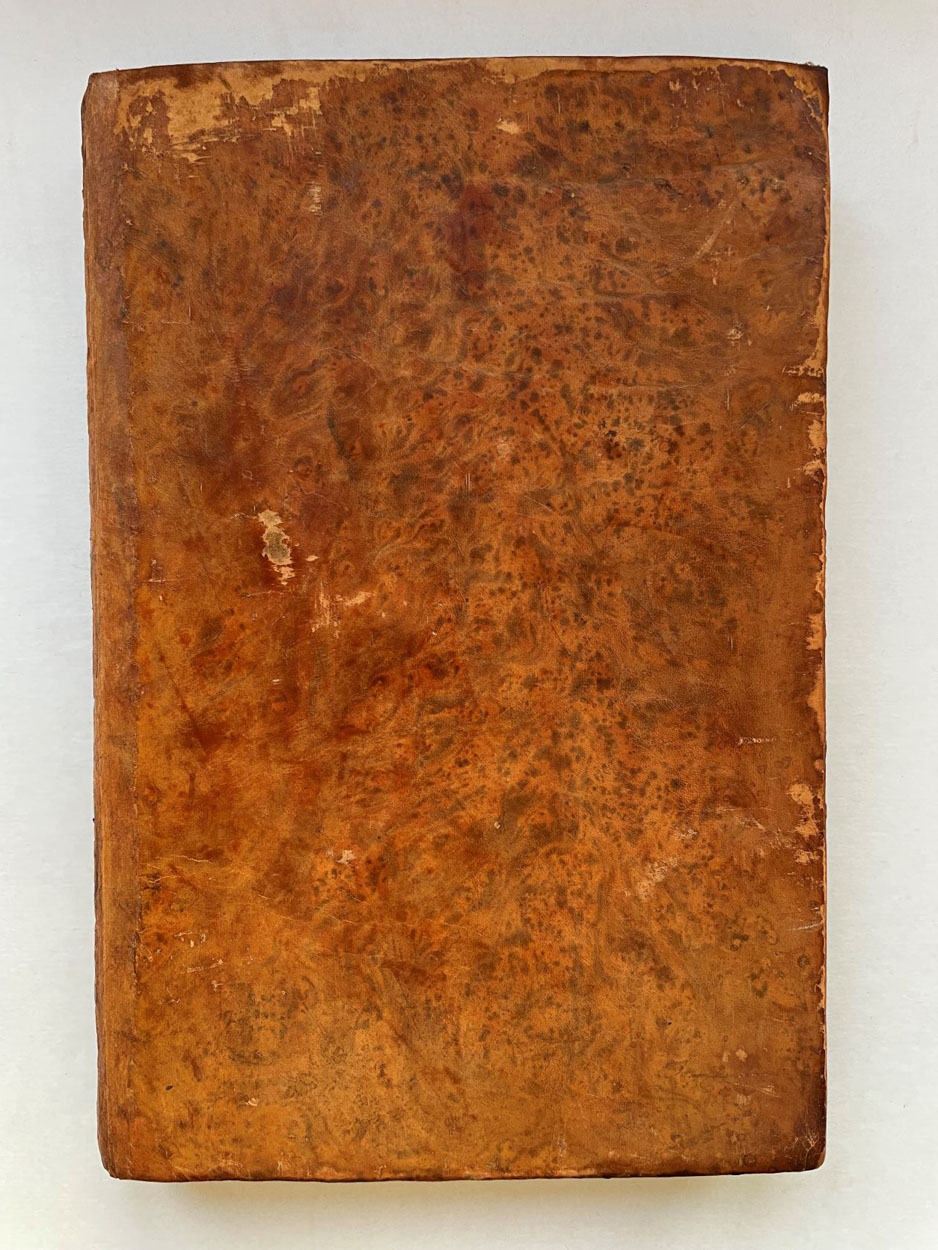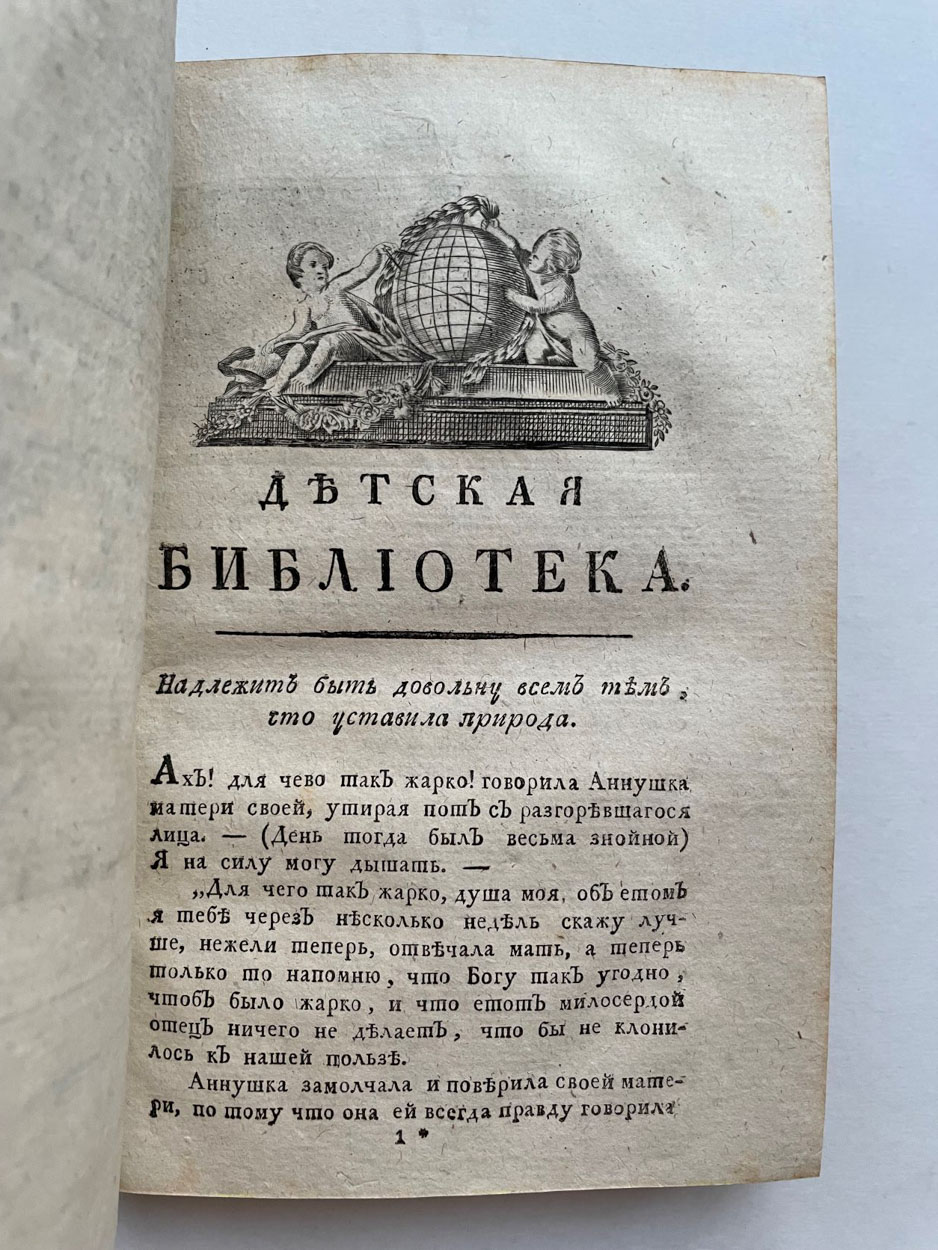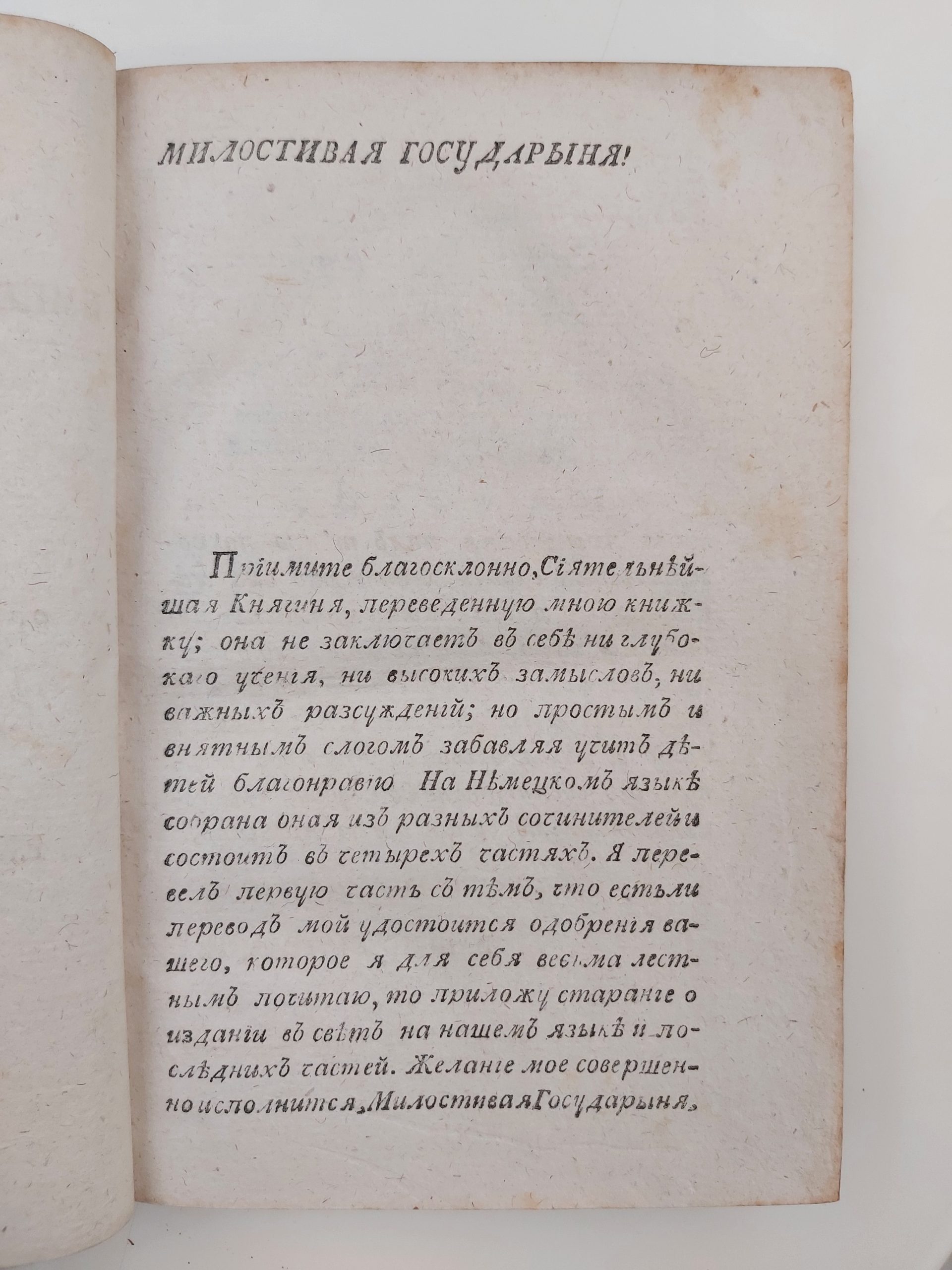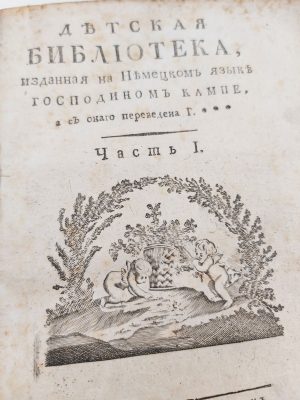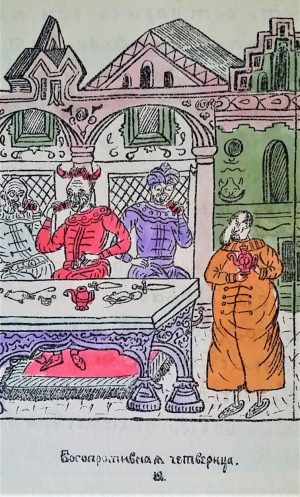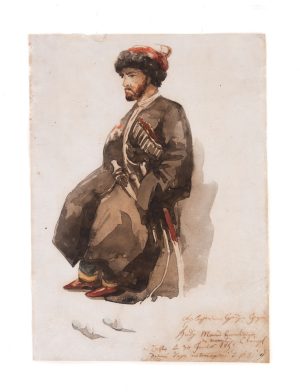Our Notes & References
The first and very influential Russian anthology for children, especially remarkable for Shishkov’s original adaptation.
A fine example, in contemporary binding, of the third printing, the last of the 18th century. Dedicated to Princess Ekaterina Dashkova (1743-1810), a close friend of Catherine the Great, the first woman in the world to head a national academy of sciences, the first woman in Europe to hold a government office and the first female member of the American Philosophical Society.
The first edition of Campe’s celebrated anthology for children came out in Russian in 1783 (Part I) and 1785 (Part 2). It was published by Dashkova’s Academy of Sciences and was an instant bestseller, as it was the first Russian anthology of short literary texts intended specifically for children, just preceding the children’s magazine Detskoe chtenie dlia serdtsa i razuma (1785-89) and the later Grech’s Izbrannyia mesta iz russkikh sochinenii (1812). Campe’s German Kleine Kinderbibliothek, taking 12 volumes (Hamburg 1779-84), quickly became famous in Europe: Mozart composed music for several texts included in it. It reached the Russia of Catherine the Great – a German Tsarina – pretty quickly too, since it was recommended for translation and publication as a textbook by the Russian committee for schools as early as 1780. The translator appointed was then the officer of the Russian Naval Cadet Corps Shishkov, a future Admiral and statesman, and founder of the “archaism” literary movement.
Shishkov’s Detskaia biblioteka successfully competed with “Magasin des Enfants ou Dialogues d’une sage gouvernante avec ses eleves de la premier distinction” by Leprince de Beaumont (1756, Russian translation 1761), “l’Ami des enfants” by Arnaud Berquin (1782, Russian translation 1799) and the children’s periodical “Kinderfreund” by Christian Felix Weiße (1776–1782).
Campe’s intention was to create an anthology that would educate a child through “pleasant and captivating reading” (Golovin). It consisted primarily of his own texts, but also included texts by other authors, significantly altered to suit children’s audience. Shishkov selected 106 texts for his translation (51 for Part I, 55 for Part II), keeping the size of the handbook manageable. He russified elements of German culture and changed some names, giving them symbolic Russian equivalents: ‘Rudolf’, for example, became ‘Dobroserd’, meaning “Kindhearted”. The edition introduced new genres and themes into Russian literature: the first Russian literary lullabies, poetic prayers, the theme of a dying child (picked up later by Dostoevsky). For the first time in Russian poetry, children’s games are described “from the inside”, using words from the games themselves (e.g. his translation of Campe’s ‘Winterlied’ as ‘Nikolashina pokhvala zimnim utekham’ [‘Nikolasha’s praise to winter fun’]).
The success of Shishkov’s adaptation was immediate, and lasted – in particular thanks to a reedition in 1793 and ours in c. 1799, before an expanded edition in 1806, totalling seven editions by 1846. After initial laudatory reviews, further praise followed:
“Every Russian […] read and learnt by heart fables and poems from Detskaia biblioteka” (Biografiia admirala Shishkova 1842, pp. 433–434);
“There was not a single educated Russian family which didn’t have Detskaia biblioteka: that is why it is still valuable. The simplicity of style, the ease of the narration still hold their merit, and even now it can be beneficial for a child (Sukhonin 1861, pp. 27–44);
“Campe’s Detskaia biblioteka, translated from German by Shishkov, especially children’s songs, which I learnt quickly by heart, delighted me” (Aksakov, Detskie gody Bagrova-vnuka [Childhood Years of Bagrov Grandson], 1858, our translation throughout).
Detskaia biblioteka served as a model for generations of educators, including Leo Tolstoy and Konstantin Ushinskii.
It is important not to confuse Shishkov’s version with the translation of Kleine Kinderbibliothek by Podshivalov, published by Selivanovskii in 1796 under an identical title (Detskaia biblioteka, izdannaia na nemetskom iazyke gospodinom Kampe), probably to serve as further parts of the work and capitalize on its success. Podshivalov’s translations also appeared as a later anthology Bestsennyi podarok dlia blagovospityvaiemykh detei (Moscow, 1797) (See Simankov).
Interestingly, all Shishkov’s 18th-c. editions were printed in the prestigious State press of the Imperial Academy of Sciences, and on one of the best kinds of paper produced then in Russia, the so-called “commentary paper” (комментарная бумага) because it was also used for printing the Commentaries of the Academy of Sciences.
Very rare. We could trace only one example of any 18th-c. edition at auction in the past 40 years: in 1976 at Sotheby’s, possibly our third printing. Apparently no pre-1817 copy at Russian auctions in recent years.
In public institutions, it seems that this third printing is the earliest (and only 18th-c.) edition available outside Russia and that there are only two printed copies: Oxford and the Yudin’s copy in the Library of Congress; no 18th-c. edition in Harvard. The RGB (Moscow) has only the 1st and 4th editions; the RNB (St. Petersburg), the 1st and 2nd.
Provenance
“The youthful library in the Russian language” (handwritten ink inscription on a paper label, hand sewn to publisher’s blank].
Bibliography
SK 2764; this edition not in Sopikov 5014 and ff., Rogozhin noting for this occasion ‘u Sopikova kakaia-to putanitsa’.
Golovin V.V., Nikolaev, O.R. I.G. Kampe “Winterlied” – A.S. Shishkov, “Nikolashina pokhvala zimnim utekham”// Detskiie chtenii. 2017. №2 (12). (online)
Bolenko, K.G. “Kleine Kinderbibliothek” I.G. Kampe v perevode A.S. Shishkova // Vestnik Mosk. un-ta. Ser. 8. 1996. № 3, pp. 57–68.
Vdovin, A. Pervyie khrestomatii po russkoi literature (online)
Sukhonin, P. A.S. Shishkov v ego literaturnoi deiatelnosti // Zhurnal min. narod. prosveshcheniia, 1861. V. 63. № 3. Otd. 5, pp. 27–44.
Simankov, V.I. Istochniki zhurnala “Detskoie chteniie” // XVIII vek, Sbornik 28. Moskva, SPb., 2015 (online).
Physical Description
Two parts in one volume 8vo (20.4 x 14 cm). 100 pp. incl. title with woodcut vignette and dedication; 117 pp. incl. title with repeated wood. vignette, [2] pp. t.o.c. With woodcut headpieces.
Binding
Full contemporary Russian calf, flat spine decorated in compartments;
Condition
Binding a bit rubbed, hinges professionally restored; first title a bit spotted, “the youthful library in the Russian language”: a handwritten ink inscription on a paper label, hand sewn to upper fly-leaf; a fresh, fine example.


